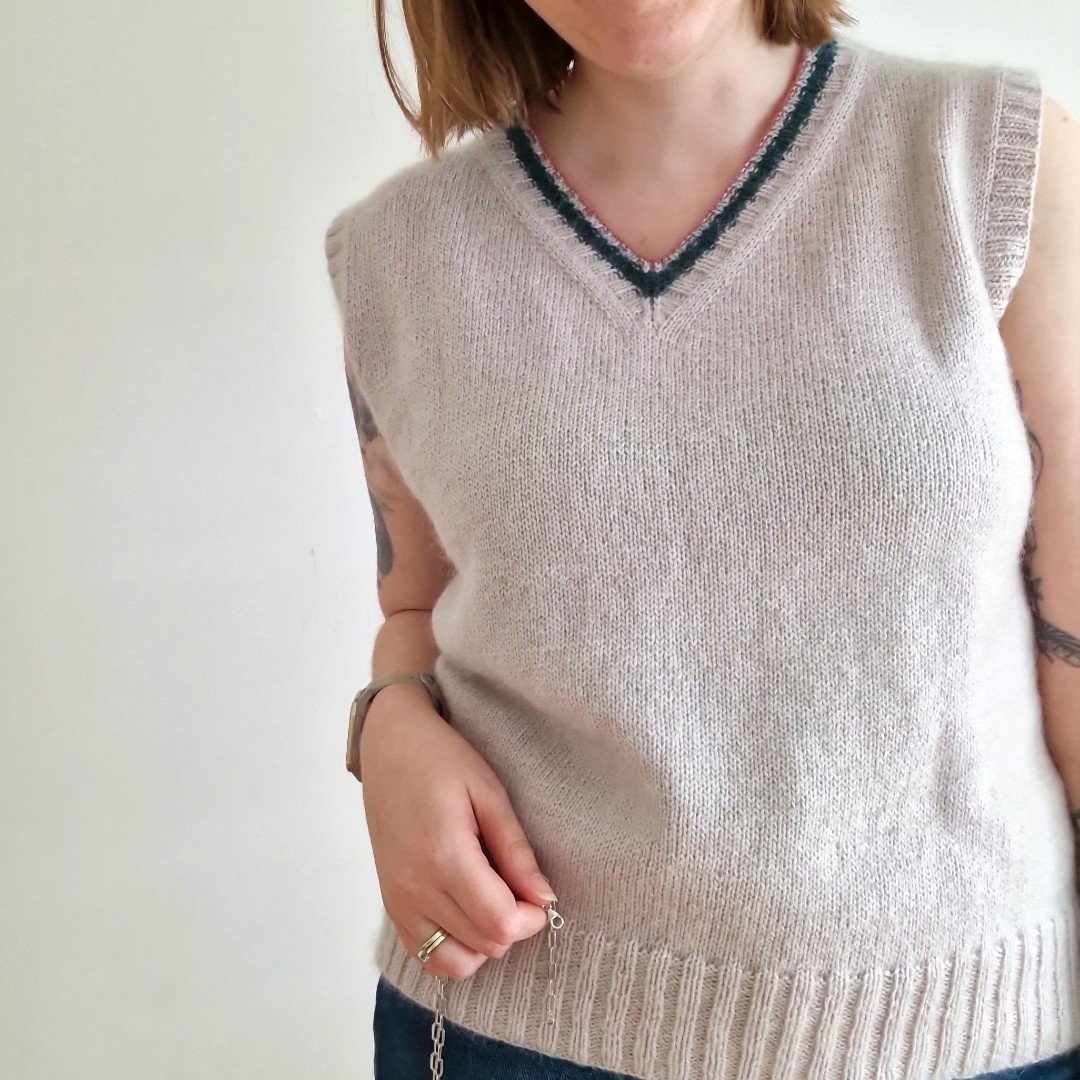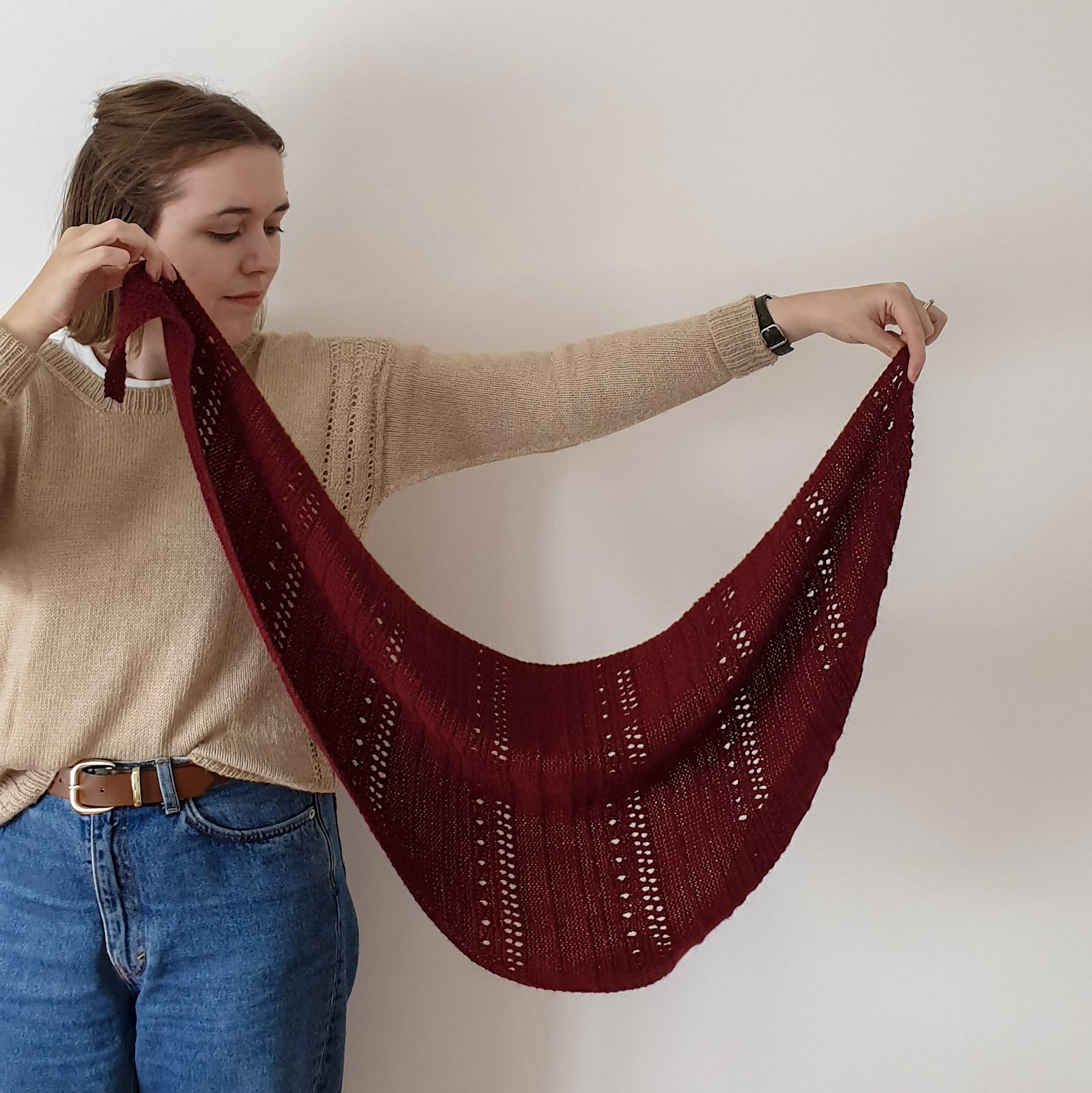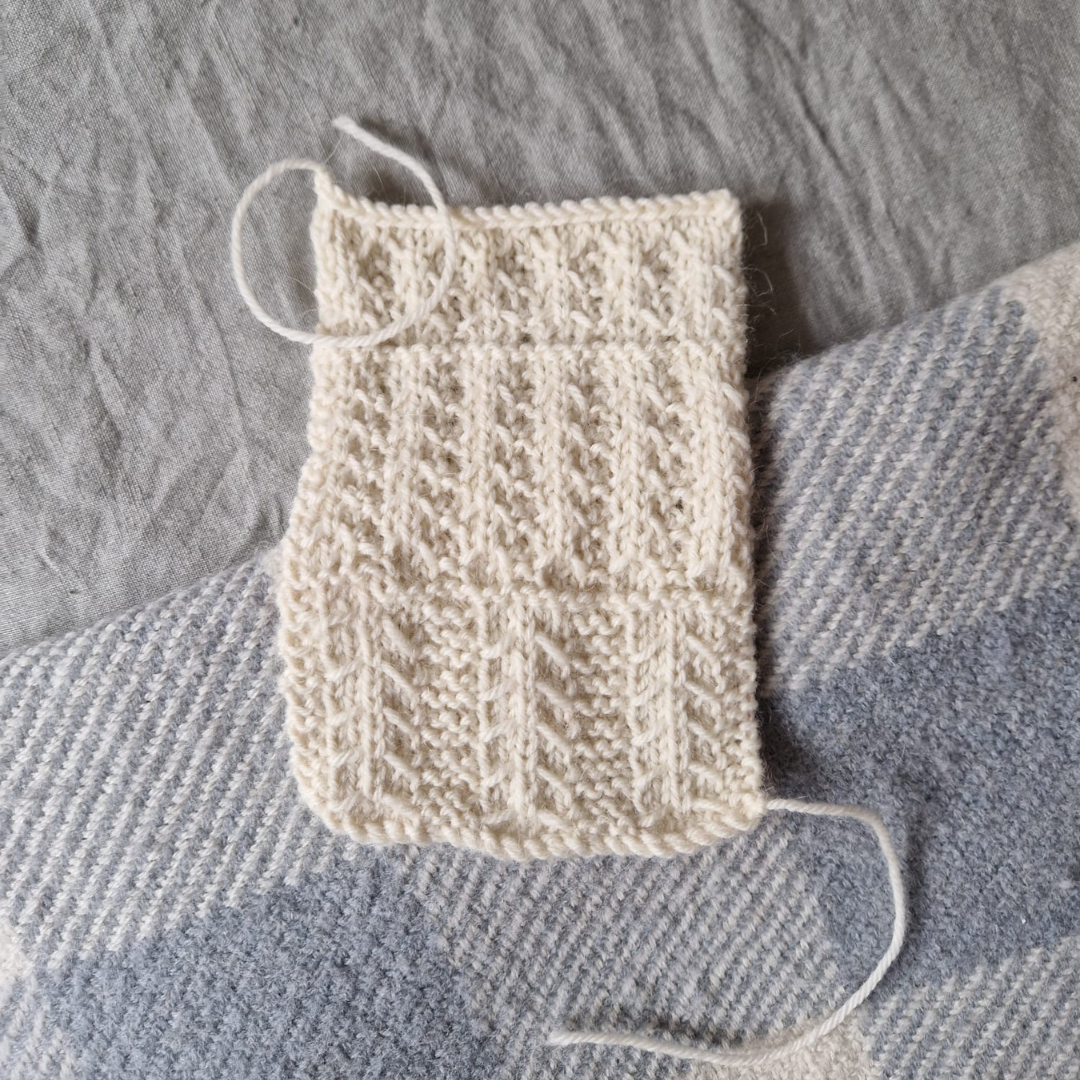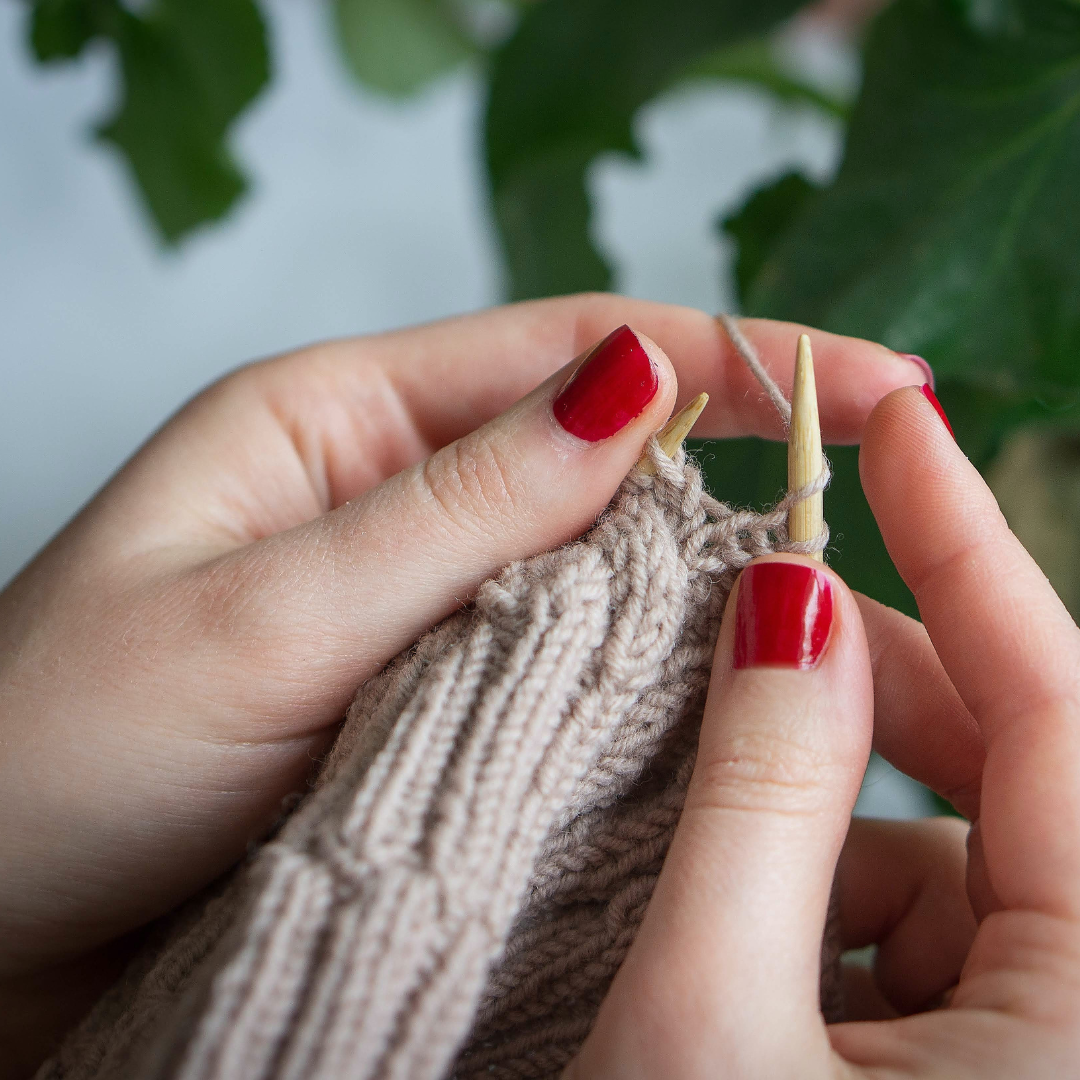Why You Should Learn Top-Down Sweater Construction
Top-down construction is an essential skill all sweater designers should have.
It’s also a bit polarising in the knitting pattern design world. Some people love it, and some absolutely hate it!
But whichever camp you fall into, including top-down sweaters in your pattern offerings is a sensible choice. If you are reluctant to learn sweater construction from the top down, it’s actually holding you back as a knitting pattern designer.
Back when I first learned to knit from magazines in the noughties, everything seemed to be designed from the bottom up and seamed. This is the sweater construction method I learned, and when I went on to study knitwear design at university, the teaching was based on cut-and-sew methods of garment construction.
So why am I, a lover of seamed sweaters, advocating for top-down sweater construction? That’s what I’m going to share with you in this blog post.
Image description: A photo of a cable sweater with the text "Why You Should Learn Top-Down Sweater Construction" on top.
3 Reasons to Design Top-Down Sweaters
1. Top-down sweaters are more commercial
As much as you may personally enjoy knitting your sweater flat and seaming, is that what your potential customers want?
If you dream of knitters buying and knitting your sweater patterns, it is wise to consider what knitters want from a pattern and try to provide that. This will make it much more likely that your pattern will sell!
Today, I searched Ravelry for the most popular sweater patterns available to purchase online. Out of the top 10 most popular patterns, 8 of them were knitted from the top down. The remaining two were also knitted seamlessly but from the bottom up.
Whilst this is not the most accurate way of demonstrating what construction methods knitters prefer when buying knitting patterns, the numbers speak for themselves.
You don’t have to design every sweater in your portfolio from the top down - I certainly don't! But it’s essential to have the knowledge and the skills to design sweaters using top-down construction. Otherwise, you are likely missing out on a large group of customers.
Image description: image of a woman sat on a stool wearing a grey sweater. The text says, Knitting Pattern Design. Why You Should Learn Top-Down Sweater Construction.
2. Top-down sweaters are easier to customise
If you’ve ever tried to customise a seamed sweater, you’ll know that it requires a fair amount of planning and note-taking to ensure that your pattern pieces will still match up correctly at the end. It’s much easier when you’re knitting from the top down.
As knitting pattern designers, we can’t achieve a perfect fit for every knitter who uses our patterns simply because we are working with standardised size charts and not bespoke. For that reason, it’s helpful for knitters to try their work on so far and check that they are happy with the fit. They can then make changes, where needed, as they go along.
When writing your top-down patterns, consider adding a note at points in the pattern where the knitter can make adjustments to the length. This could be before splitting at the armholes, the hem or the cuffs.
You could say something along the lines of:
Knit until the lower body measures 25 cm (9.75 in) from the armhole or until it measures 2.5 cm (1 in) less than your desired sweater length.
Image description: a close-up photo of a pile of sweaters in white, grey and beige.
3. Top-down sweaters are more likely to get finished
I’ve met knitters who have had bags of unseamed sweaters hanging around in their cupboards for years. They loved knitting the pieces but hate seaming, so the sweater remains unfinished indefinitely.
When designing and selling knitting patterns, reviews and finished project pages are just as important as your pattern page when it comes to selling.
If knitters can see that others have had success from working with your patterns and have created beautiful final projects, it can be just the thing that persuades someone who was initially on the fence to press “purchase”.
By designing top-down sweaters, with minimal finishing needed at the end, your customers are more likely to finish their projects and share their happy reviews on Ravelry or social media. This will, in turn, lead to more people discovering your work and buying the pattern themselves.
Conclusion: Why You Should Learn Top-Down Sweater Construction
Whether you enjoy knitting from the top down or not, I hope I have shown you that having a selection of top-down sweater designs in your pattern offering is a sensible choice. Not only will you likely sell more patterns, but you will also end up with happier customers and more rave reviews.
If you’ve been procrastinating on learning top-down sweater construction, why don’t you set yourself a goal for 2023? Let this be the year you learn this essential skill for all sweater designers.
Which way do you prefer to design your sweaters: from the top down or bottom up? Share your reasons why in the comments section below!























